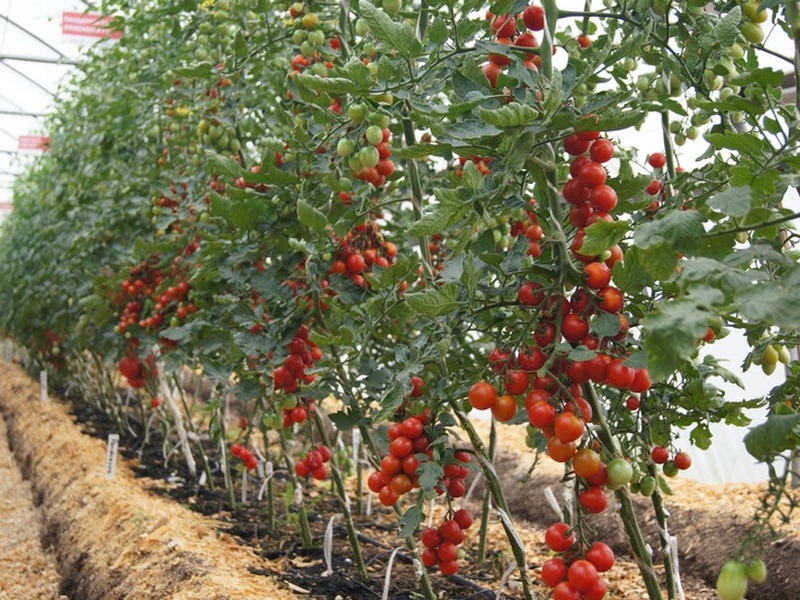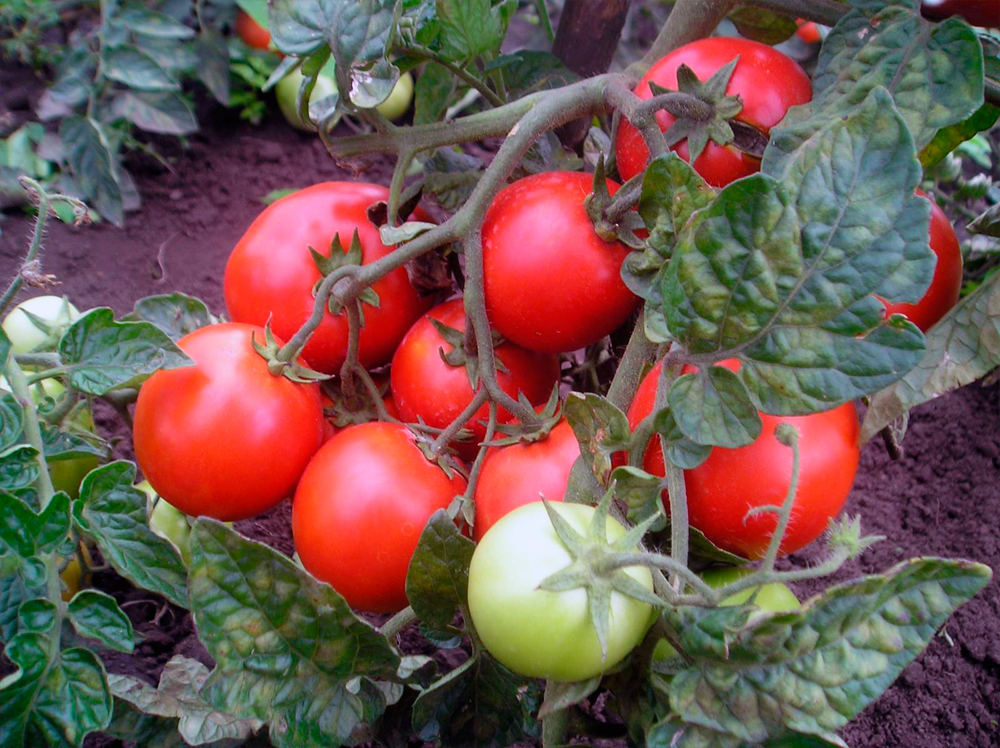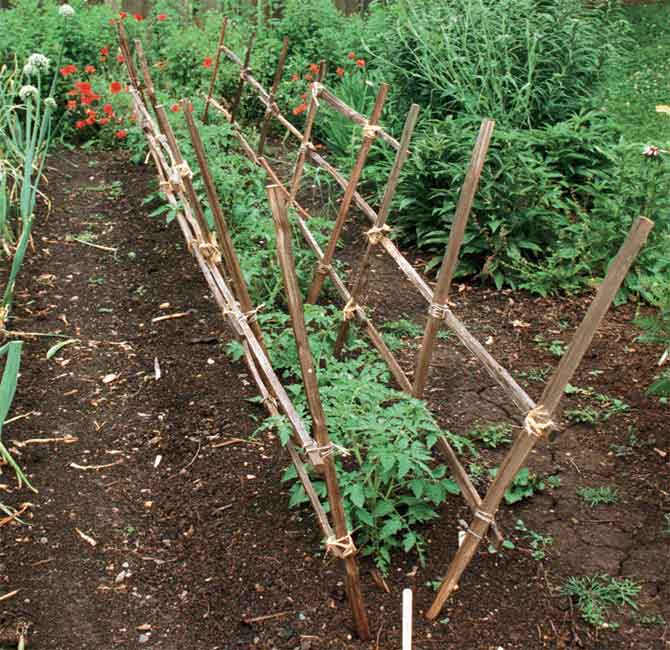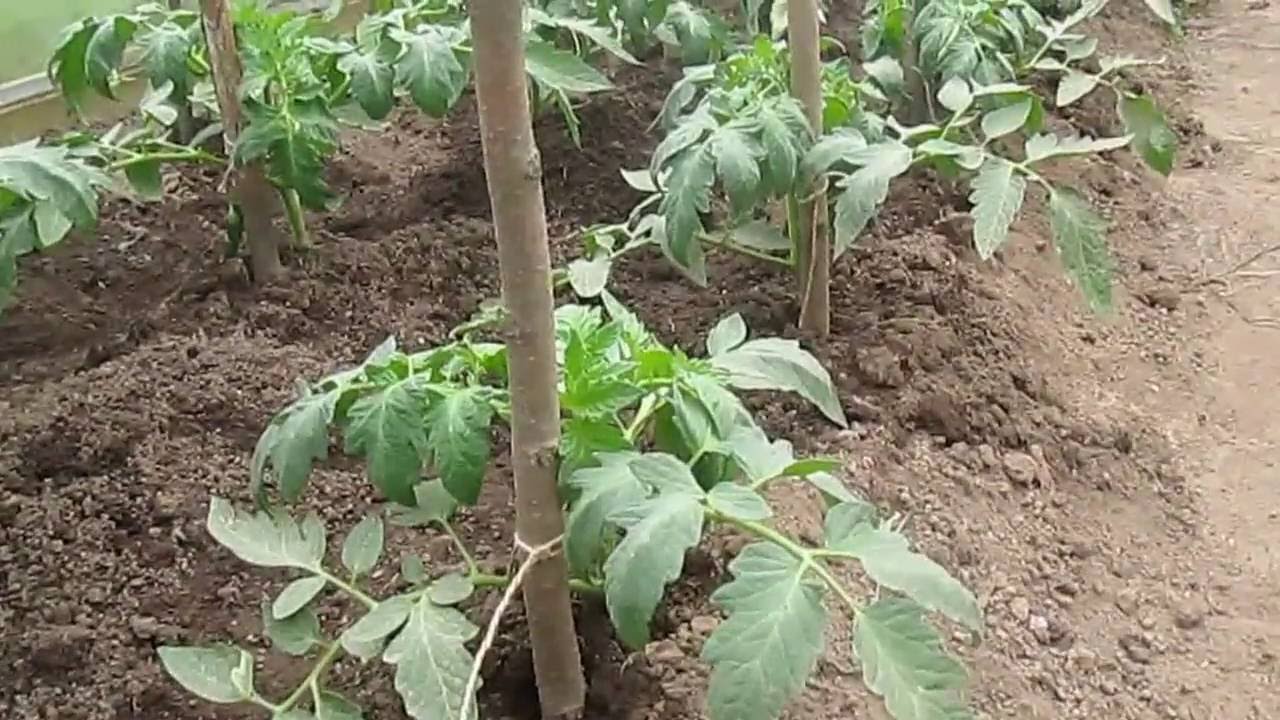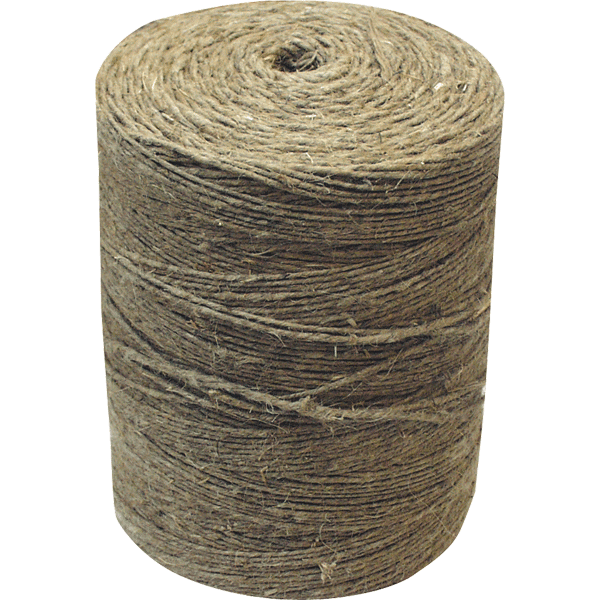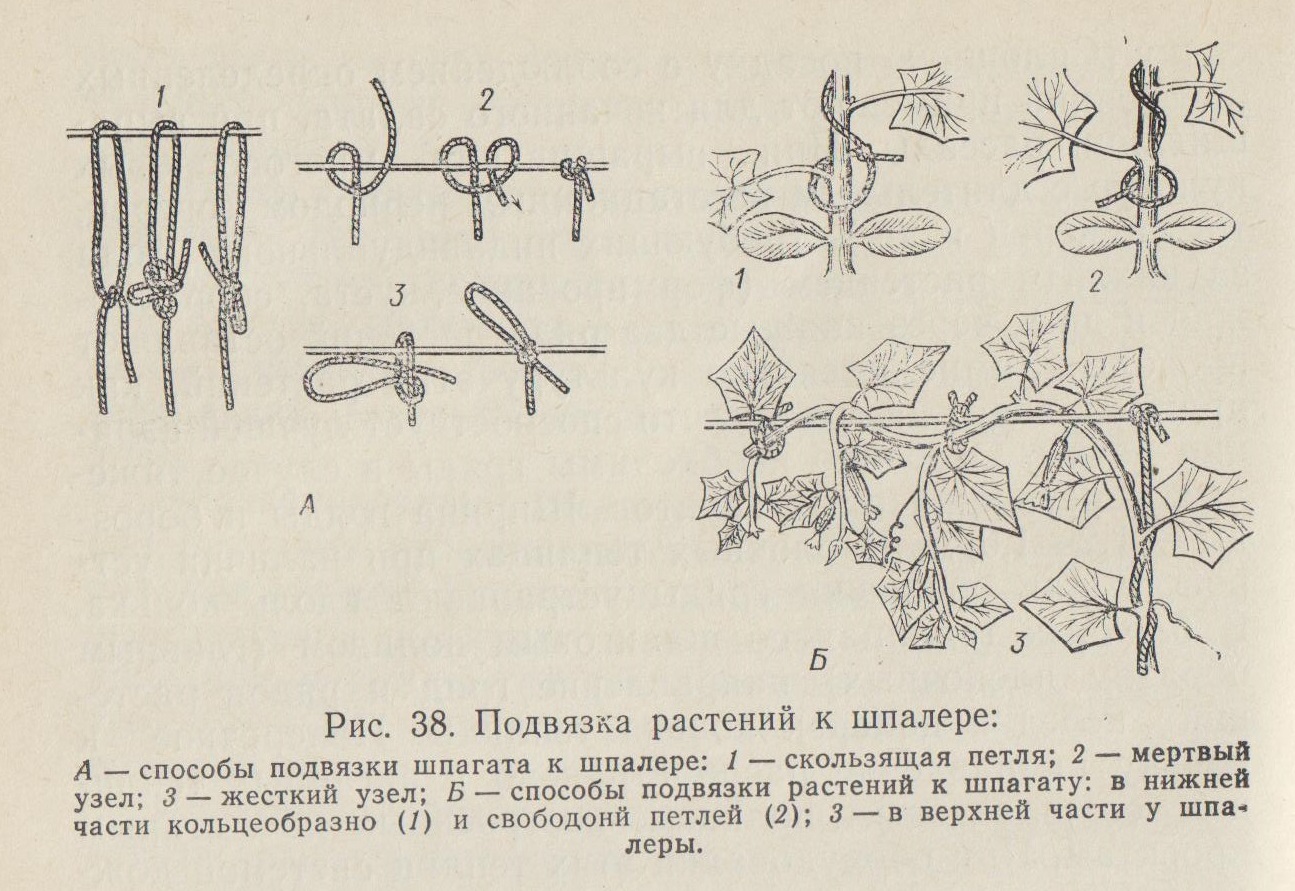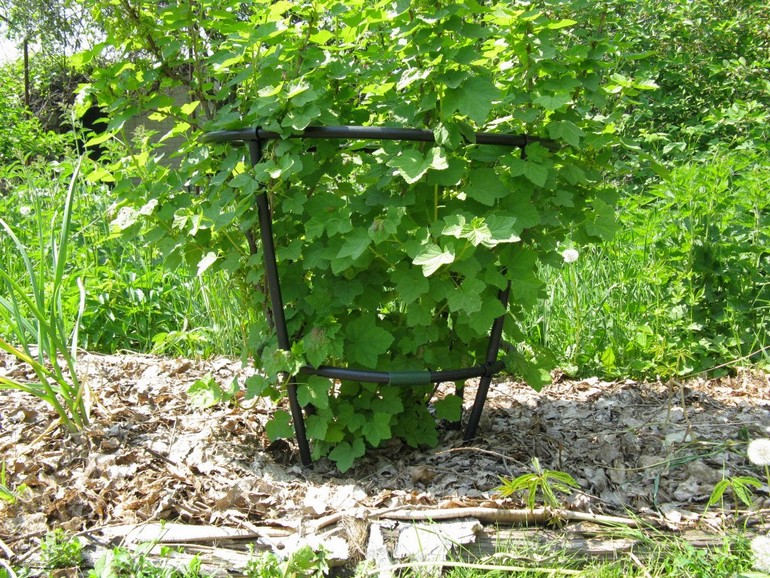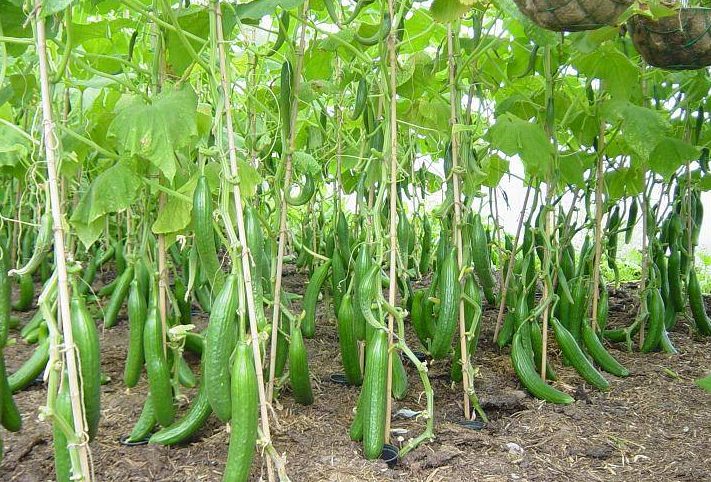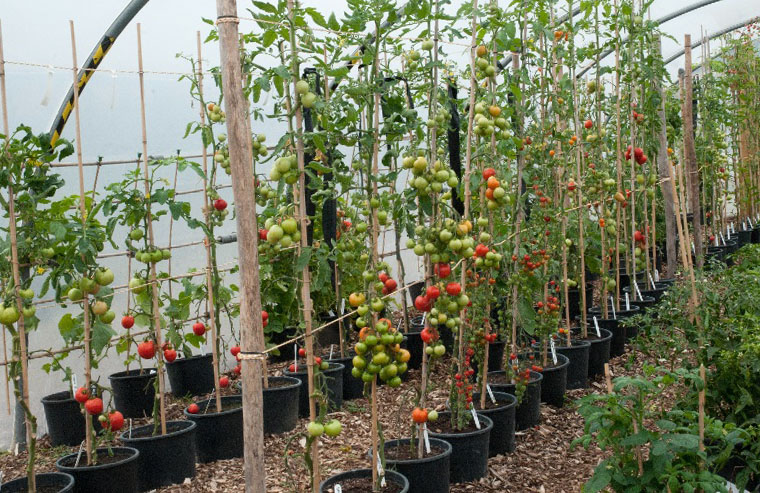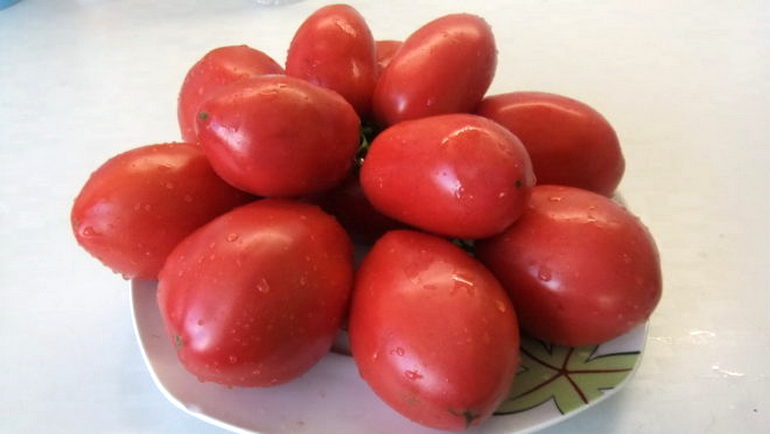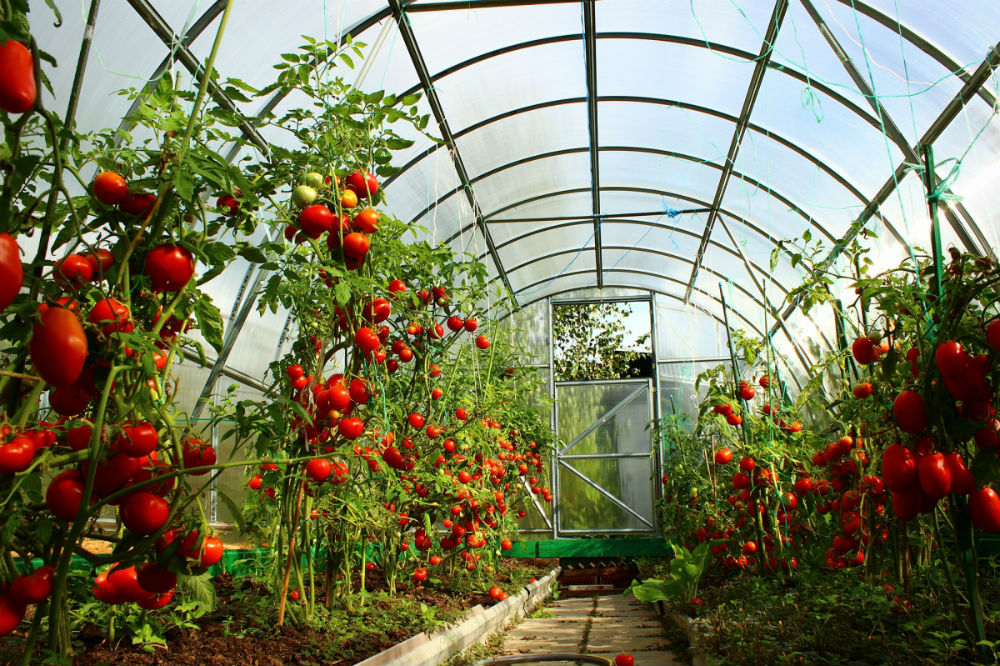Content:
Tomatoes grow in almost every plot. They are rich in vitamins and useful elements, and are not inferior to citrus in terms of vitamin content. To be able to harvest continuously, you should pay attention to tall varieties of tomatoes.
The technology of growing tall tomatoes is not complicated, but it requires some agrotechnical skills. Tall varieties are suitable for growing in greenhouses and outdoors. The plant can grow to a height of 7 meters.
Growing indeterminate varieties in a greenhouse
Greenhouse soil is prepared in the fall: it is dug to a depth of 20 cm, fertilizers are applied. Manure is used as fertilizer. In the spring, the earth is dug up again with the addition of manure, superphosphate and potassium chloride.
Typically, tall varieties are grown through seedlings. Seeds are sown at the very beginning of spring, 2 months before the planned planting of seedlings in a permanent place.
If they sow their own seeds, they are pretreated: they are disinfected, disinfected, soaked, germinated.
After the pre-sowing treatment, the seeds are sown in boxes filled with prepared soil mixture. Several furrows are made in the boxes with a depth of 1 centimeter. The distance between the furrows is 5 centimeters. Seeds are sown at intervals of no more than 2 centimeters. The boxes are placed in well-lit places in the house or on the balcony, the air temperature should not fall below 22 degrees. It is good to grow seedlings in greenhouses. Seedlings are planted in the greenhouse at the age of 65-70 days.
Seedlings are planted in prepared deep holes. The best arrangement of tall tomatoes is staggered. This provides good lighting and ventilation between the plants. In open ground, seedlings are planted in the phase of 10 true leaves. The distance between plants is 50 cm, between rows - 70 cm.
How to tie tomatoes correctly
Many gardeners agree that tall tomatoes require additional support. For this, the bushes are tied up.
Benefits of garter tomatoes:
- The stem of the plant reaches a height of 2 meters and can break under the weight of the formed fruits.
- Tied tomatoes spend more energy on the formation and development of fruits.
- The vertical arrangement of the bush provides good ventilation and penetration of sunlight.
- It is more convenient to look after the tied bushes: water, spray, pinch.
- Garter tomatoes provide less contact with the ground bush, reduces the likelihood of moisture and leaf rot.
Tomatoes begin to tie up 3 weeks after planting in a permanent place.
When and how to tie tomatoes
The very process of tying tomatoes involves attaching the stem or branches of tomatoes to an installed support. The procedure is repeated as the height of the bush increases.
Ways to tie tomatoes
Based on the preferences and capabilities of their site, gardeners use various methods of garter tomatoes. The seedling planting scheme and the materials that will be used to create additional support for tomatoes are thought out in advance.
How to tie tomatoes in the greenhouse and in the open field:
- Horizontal garter on a trellis. This method is suitable for a large number of bushes. At the beginning and end of the tomato ridge, stakes are installed. A wire is pulled between the stakes. The first level of wire or rope is pulled at a distance of 40 cm from the ground, following as the bush grows. Plants are attached to a stretched wire.
- Garter to the pegs. Stakes are driven in next to the tomato, the height of which should be higher than the bush. For pegs, use metal rods, plastic pipes, wooden sticks. The stem should be tied to these devices with a non-rigid synthetic material. Also, clips or clamps sold in garden stores can be used to attach tomatoes to a peg.
- Vertical trellises. Supports are installed along the edges of the tomato row, a strong wire is pulled from above. Each tomato bush is secured with a rope to the base and then attached to the top rail. The stem is wrapped around a stretched rope so that it does not fall to the ground.
- The installation of metal cages is one of the options for a vertical support. Each tomato bush is placed in a metal cage in the shape of a cylinder. The plant should be tied up constantly as it grows.
- Tensioning the mesh fence. A metal mesh is dug in along the bushes to a depth of 40 cm. Tomatoes are attached to supports installed along the edges and in the middle of the garden bed. The plant is attached to the net with twine and clothespins.
- Slanted garter with tomato caps. They build a pyramid of wire or wooden sticks, and set it on the garden bed during the transplanting period. When using a pyramid, tomatoes are planted at intervals of at least 1 meter.
For garters of tomatoes, it is not recommended to use hard materials, they can damage the stems. Also, waste ropes and twines are not suitable for garters. They may contain fungal spores and infectious agents.
Materials for garter bushes:
- nylon cord,
- wide and thick rope,
- twine,
- old stockings or knee-highs,
- another synthetic material with a low stiffness index,
- clips,
- clothespins.
Tie clips - plastic clips that resemble clothespins. They are used to attach the stem to a vertical or horizontal support. The advantage of clips is the presence of sections that do not allow the clips to slide on the support.
Clothespins for tomatoes are clips that have a ring or spring mechanism. With their help, bushes can be attached to the walls of the greenhouse, horizontal slats, ropes stretched from the ceiling, or to neighboring resistant plants.
Tomato garter knots
The most popular way is to tie tomatoes with a free loop, by Julia Minyaeva. The author of the method emphasizes that the free loop for garter tomatoes does not damage the tomato stem, and also firmly fixes the plant to the upper wire or rail of the polycarbonate greenhouse.
How to make a free loop
It is necessary to take a twine or rope with which the tomatoes will be tied. A tomato bush is wrapped around a rope, the short end of the rope is in the left hand. A loop is formed around the bush. Then the short edge is wound under the formed loop and wrapped in it. A knot is formed that can be adjusted by pulling the thread.The free end of the rope is wrapped around a bush, the appropriate length of the rope is measured and attached to a tensioned wire or rail.
Tips from experienced gardeners
Each year, new ropes or twines should be used to tie the tomatoes. Spores of fungi or infection remain on last year's materials.
Before tying, the material is boiled or disinfected.
To get a good harvest of tomatoes, you need to properly care for the plants. Timely watering, feeding, prevention of diseases and pests are the basis of the agricultural technology of growing tomatoes. In addition to basic actions, it is important to know how to tie tomatoes. Tall varieties require more garters than short ones. The support supports the bushes during the period of fruit ripening. Tied plants are easier to spray, feed and water. Tomato leaves are less in contact with the ground, which helps prevent the development of various diseases. Thanks to tying, each gardener can get an excellent picture: a rich harvest of tall varieties in his area.
